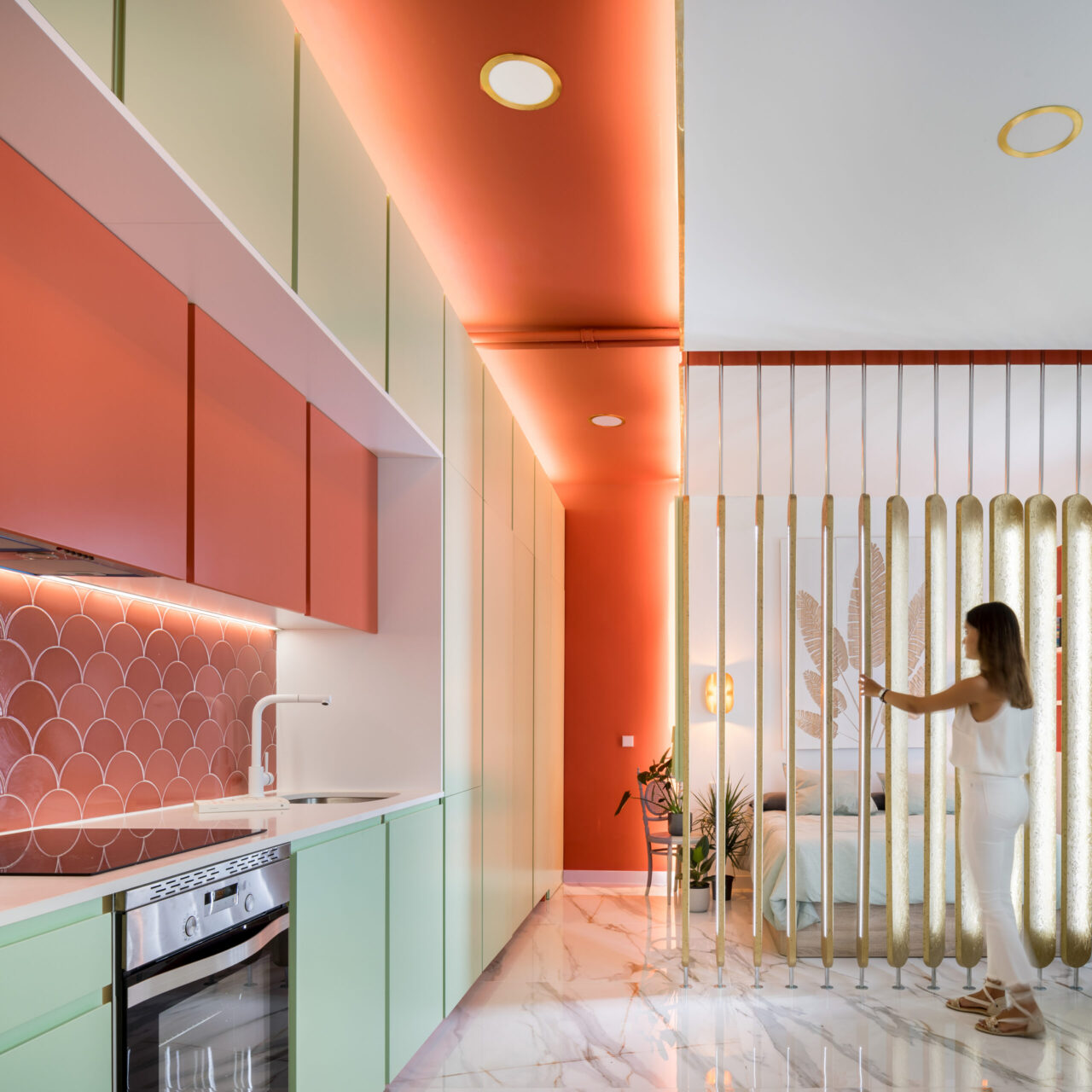Platinum Winner of the International Architecture & Design Awards 2022
Architect / Designer:
Joaquín Millán
Studio:
OOIIO Architecture
Design Team:
Joaquín Millán Villamuelas, Alba Peña Fernández, Sandra Butautaite
Copyright:
Javier de Paz
Country:
Spain
Change of Use Project from a former Shop to a Home in Madrid.
New opportunities for obsolete spaces.
As societies patterns fluctuate and evolve, the habitats of life existence follow in parallel. Spatial boundaries are therefore required to become more flexible and functional in which such hybrid models can allow digital and physical realms to coexist. This notion in turn provides opportunities to recreate and enhance the user experience on a variety of scales. That said, proposed project consequently demonstrates the transformation of an apartment typology with the embodiment of a haberdashery ideal.
Reimagining spaces are common practices in large cities such as Madrid. Footprints of neighborhood shops, parking lots or work placements now are overtaken by apartments. As family scales minimize and single user occupants become more common, smaller living quarters overtake the redevelopment of major and minor cities. This reality can be seen from a negative perspective, if we look at the loss of the commercial, economic and social fabric that shaped the neighborhoods a few decades ago; or from a positive point of view if we value the opportunity of recycling and revitalization degraded areas brought to light by these Changes of Use Projects.
In just 55 m2 this apartment focuses on what is necessary for a contemporary urban life. The rectangular space that occupied the old store is now embraced by an “L” of storage voids. This allocation frees the entire space, providing the new “living room-working area-dining room-bedroom” as much natural light as possible from outside. Golden slats direct unwanted light while also giving privacy when required. In addition, the old commercial warehouse is used now as a bathroom, being hidden behind the “L” of cabinets.
The materials used in the project are simple, cost sensitive and appropriate to the scale of the intervention, without giving up its expressive opportunities. The combination of colors and textures are very important in this small house. In overview, two large rectangles open up on the fronts of the mint-colored cabinets, framed with white marble and tiled with coral ceramic tiles, intentionally placed in front of the windows so that natural light makes it appear more vibrate. Equally enticing, in the narrow bathroom, bright turquoise tiles are also used and reflect light, making the small available space more sensory. Finally, the gold of the directional slats is repeated in the details of the cabinets, lights and the veining of the marble on the floor.
In essence, this small apartment recycles and reinvents an obsolete space, designed for 21st century urbanites.


